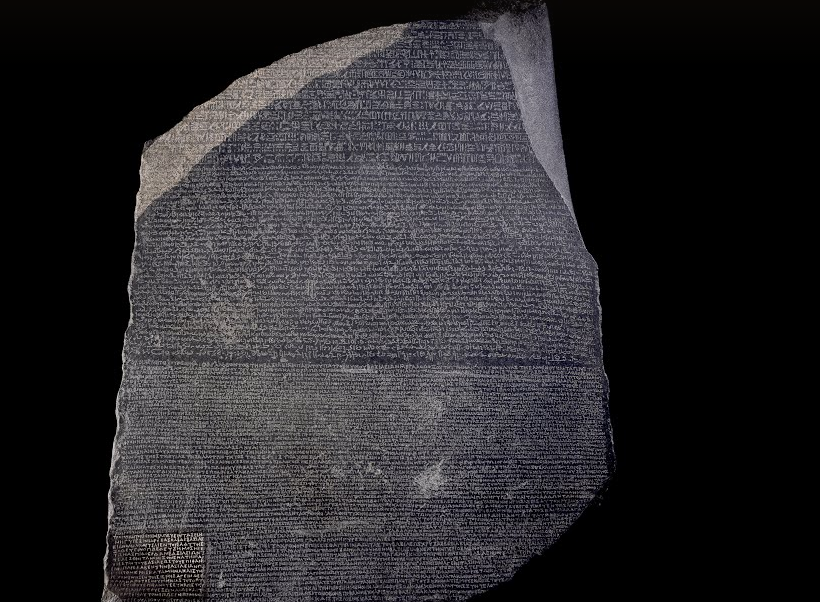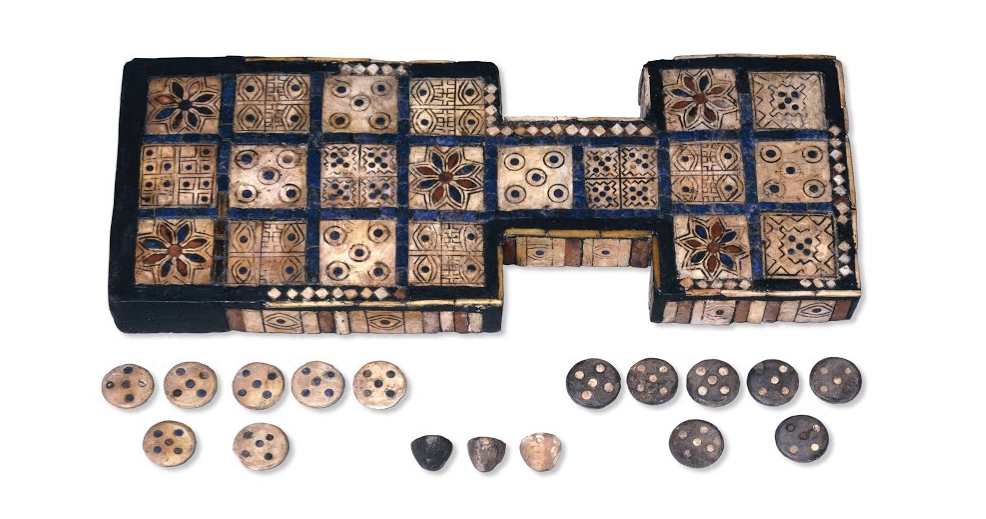
“I met a girl at the British Museum once,” a fellow said to me at a party last weekend. “Her name was Rosetta. Rosetta Stone.” A groaner indeed, but also a reminder of how far we’ve come: whereas you once really would have had to go all the way to the British Museum (in London) to run into good old Rosetta, now you can get acquainted with her, and 4,633 of the other fascinating artifacts of human civilization held there, without even stepping away from your computer.
The British Museum charges nothing for admission, of course, but now the internet has freed it in the geographical sense as well.

“The British Museum recently unveiled the results of its partnership with the Google Cultural Institute (GCI),” writes National Geographic’s Kristin Romney, “the world’s largest Google Street View of an interior space, covering nine floors and 85 permanent galleries of the museum.” Have a virtual walkthrough, and you’ll pass displays of about 80,000 notable objects; the highlights Romney names include the Lewis Chessmen and cat mummies, the Elgin Marbles, and even architectural features of the museum itself such as the “the yawning expanse of the museum’s Great Court, the largest public square in Europe, with early morning light filtering through the 3,312 glass roof panes.”

After you’ve enjoyed this Street View stroll, you’ll surely want to examine some of these items in greater depth. You can do just that at the virtual exhibits of the Google Cultural Institute’s British Museum collection, where you’ll find high-resolution images of and background information on 4,737 artifacts, the Rosetta Stone included. Or you can take a close look at a segment of the Elgin Marbles, a scene from the Parthenon showing “the sacred robe or peplos of Athena that was escorted to the Acropolis by the procession of the Great Panathenaic Festival, held in Athens every four years.” Not old enough for you? Then behold the Royal Game of Ur, an early board game of sorts discovered in the Royal Cemetery of the Mesopotamian city-state of Ur. And even further illumination of the ancient world awaits you beyond that, all thanks to this most modern sort of project. You can enter the collection here.
Related Content:
The Complete History of the World (and Human Creativity) in 100 Objects
Visit The Museum of Online Museums (MoOM): A Mega Collection of 220 Online Exhibitions
The Metropolitan Museum of Art Puts 400,000 High-Res Images Online & Makes Them Free to Use
LA County Museum Makes 20,000 Artistic Images Available for Free Download
Rijksmuseum Digitizes & Makes Free Online 210,000 Works of Art, Masterpieces Included!
Whitney Museum Puts Online 21,000 Works of American Art, By 3,000 Artists
Based in Seoul, Colin Marshall writes and broadcasts on cities and culture. He’s at work on a book about Los Angeles, A Los Angeles Primer, the video series The City in Cinema, the crowdfunded journalism project Where Is the City of the Future?, and the Los Angeles Review of Books’ Korea Blog. Follow him on Twitter at @colinmarshall or on Facebook.


Oh, yes. It must be great to see all those antiquities Britain STOLE from various places. The Rosetta Stone is stolen, the Parthenon marbles are stolen and so on and so forth.
Beautiful indeed!
Why have they not given the artifacts they looted/stole from Greece back to the Greek people? Instead they are on display in England? No shame at all.
Using instructions from a craft book, I made a replica of that game board out of wood., calling it “the humble game of UR” (the original is styled “The Royal Game” and made of inlaid stone). It’s so familiar to me that it’s a shock to see the original on the Web!
Who broke into my house and stole my board?
You may come to Greece both to see them in the very place they belong to and where they were made and at the same time enjoy sea, sunand culture. What a combination!
The epitomy of stealing goods excuse: “I have stolen it because I want to look at it in my house whenever I like…”.
Right now (and not to be Anglo-Centric or an Anglo-Phile) I’m glad it’s at the British Museum and not in Greece or in Syria or in Iraq. Where those Contries Economic woes or Political instabilities could render a lot of these artifacts as either stored-away or entirely destroyed.
Idk why people are saying the artifacts are stolen… Maybe they were bought from black market. Idk. But the roseta stone should be in france.
You will be able to see them if you were to visit the museums in the countries from which the loot was taken. The Parthenon Gallery of the Acropolis Museum is far nicer than than the gallery in the British Museum where the Parthenon marbles are currently on display. Perhaps English people could instead enjoy their own heritage in the British museum instead.
Roman Mosaic from s. IV d.C., téchnic opus tesselatum, found in 1857 en Halicarnas, actual Bodrum/ Turquía, hoy Mº Británico, Londres.
‘Hygía’- Health,
‘Zoé’ — Life
‘Chará’ Joy, charm
‘Eiréne’ peace
‘Eutymia,-good heart
‘Elpís’ ‑hope spirits
*Opus tessellatum normal technique of Greek and Roman mosaic, made from tesserae that are larger than about 4 mm. … Opus tessellatum is usually used for backgrounds consisting of horizontally or vertically arranged lines, but not both in a grid, which would be opus regulatum (
Question: a) Eiréne = Ἐιρήνη; written with n: not be V?……………….. Ἐιρήνη?
b) Eutymia= εúθυμία wrotten with M: should it not be: μ as: εúθυμία /εú:good; θυμιος: heart
Would love to know if I am wrong by my assumption.
The British have the moral obligation to return the Marbles of Parthenon, that stole more than two Centuries ago, to Greece and demonstrate to the World that they are civilized and respect the history and ancient monuments and artifacts of other Countries. In other words, Imperialism and Colonialism are things of the past.